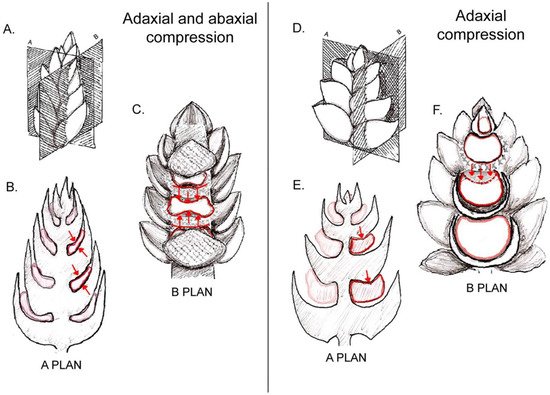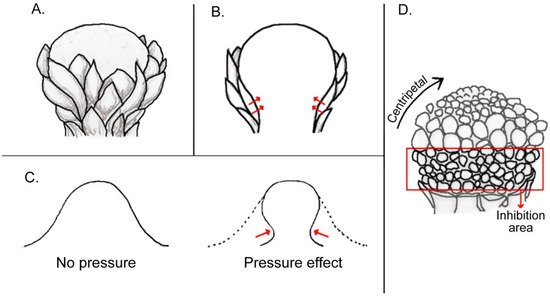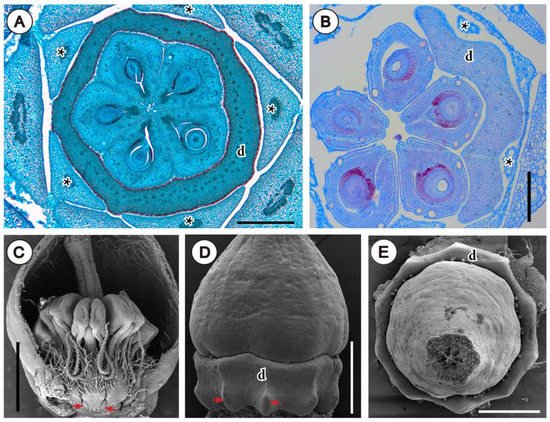Specialized foliar organs such as an involucrum and spathe may surround flower-like inflorescences, which are known as ‘floral units’
[41][1] (such as heads of Asteraceae, umbels of Apiaceae, spadices of Araceae, etc.) and play an important role in the early development of flowers (
Figure 2). While these structures are linked to the protection of the developing reproductive organs and attracting pollinators (e.g.,
[42,43,44][2][3][4]), in many cases they may also play a decisive developmental role by exerting a compressing force on the enclosed developing young flowers (
Figure 2). As the major pressure of involucra and spathes occurs at the base of the floral unit close to the attachment point, the consequence is a retardation of the initiation and/or growth of the basal-most flowers. This was documented in the development of the spadices of Araceae
[45,46,47][5][6][7] and
Gunnera [48][8], as well as in the heads (capitula) of Asteraceae
[49,50,51,52][9][10][11][12] and of
Davidia [53][13]. Interestingly, the retardation and inhibition of basal florets in heads of Asteraceae coincides with their identity as ray florets (
Figure 2)
[50][10]. In this regard, it could be hypothesized that the pressure of involucral bracts on the basal florets of the asteracean head is a key ontogenetic trigger for their configuration as ray florets (
Figure 2), probably even triggering the corresponding genetic cascade that leads to their differentiation. This pressure may also affect sex differentiation, since ray florets are sterile in some taxa (e.g.,
Helianthus annuus L.
[54][14]). Conversely, it could be also inferred that capitula lacking ray florets would develop from buds lacking a tight involucrum, and consequently, a lack of pressure in the basal-most part of the capitulum primordium.
Figure 2. Illustration of compression forces of an involucrum on a central meristem: (
A) figure of an involucrum formed by several bracts surrounding a central reproductive meristem. (
B) Longitudinal section of (
A), showing pressure exerted by involucrum at the base of the meristem (red arrows). (
C) Diagram of a typical FUM, i.e., a head meristem, showing centripetal progression of florets in the upper part and delayed floret growth at its base in area of inhibition covered by involucrum. (
D) Silhouette of a terminal meristem without (left) and with an involucrum (right). Red arrows denote deformation of the meristem by an involucrum.



